Historic England adds 25 sites to regional ‘at risk’ register
The annual register, which was published on Thursday 26 October, saw 30 sites removed because their futures have been secured, and 25 places added to the list.
In the region, 89 grade one and two-listed buildings, 114 scheduled monuments, 134 places of worship, seven registered parks and gardens and 65 conservation areas are at risk of neglect, decay or inappropriate change, according to Historic England.
Charles Smith, heritage at risk principal for Historic England in the North West, said: “Heritage promotes a sense of belonging and civic pride – and it can also be a huge driver for economic growth, stimulating regeneration and tourism. This year we have seen some wonderful places saved as result of fruitful partnership working with councils.”
Smith added that the continuing decline of local authority conservation officers could start to jeopardise designated historic parts of the region.
Various sites have been removed from the register including St Luke’s ‘bombed out’ church in Liverpool which will be home to an arts and events space supporting vulnerable people. Other sites removed include Birkrigg stone circle, near Ulverston, Cumbria and Ashnott lead mine and lime kiln, Newton, Lancashire.
There are 409 assets on the North West Register, 14 fewer than in 2016. Nationally, 840, or 3.8%, of all grade one and two-listed buildings are on the register, and in the region 89 listed secular buildings are classed as ‘at risk’, which is 5.6% of all listed buildings in the area.
See a selection of sites added or progressed below. All images supplied by English Heritage.
SITES ADDED
Burton-in-Kendal conservation area, Cumbria.
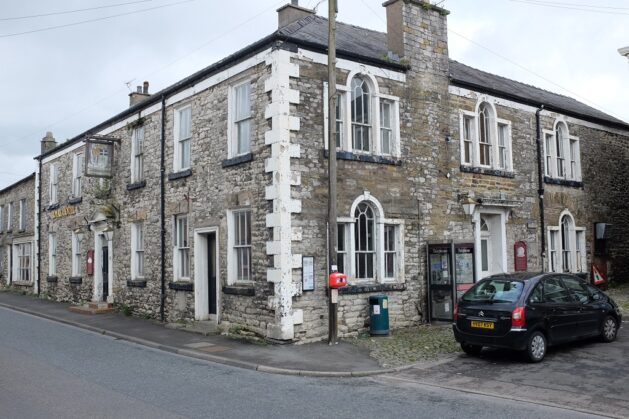
One of South Lakeland’s most historic villages, a number of buildings are empty with some showing decay and loss of historical detail. Historic England said it will work with South Lakeland District Council to address these warning signs and kick-start its recovery.
New Sedgwick gunpowder works, Cumbria.
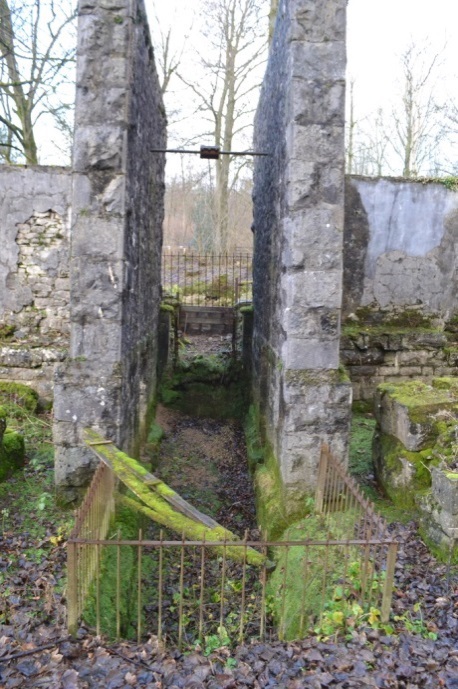
Part of an old mill
The scheduled monument has been damaged by flooding. Gunpowder manufactured here from 1857 until 1935 was used for mining and quarrying. Remains including mills and a pump house can be seen. Historic England will work with the National Trust to address flooding problems.
Fleetwood town centre conservation area, Lancashire.

Marine hall in the town
The coastal town of Fleetwood was a rare, planned settlement in the region. In the 1830s, the landowner hatched a plan to re-develop the town into a seaport. Historic England will work with Wyre Council to help preserve the buildings and attract private investment.
St Joseph’s Catholic Church, Lancaster, Lancashire.
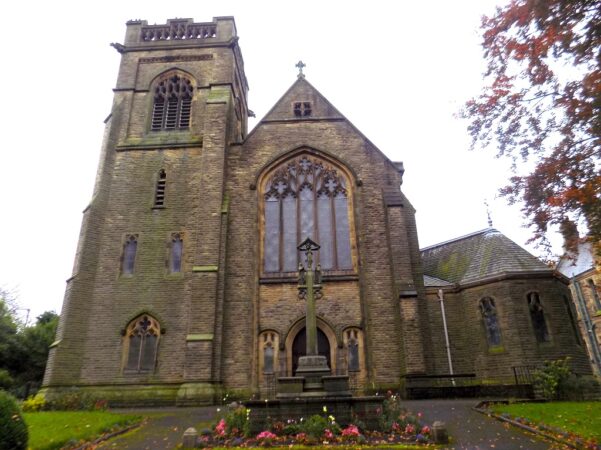 The gothic church was designed by Pugin & Pugin and built in 1900. The church overlooks the River Lune and was constructed in sandstone and slate. However, it is no longer watertight and is in need of significant repairs.
The gothic church was designed by Pugin & Pugin and built in 1900. The church overlooks the River Lune and was constructed in sandstone and slate. However, it is no longer watertight and is in need of significant repairs.
SITES PROGRESSED:
Appleby conservation area, Cumbria.
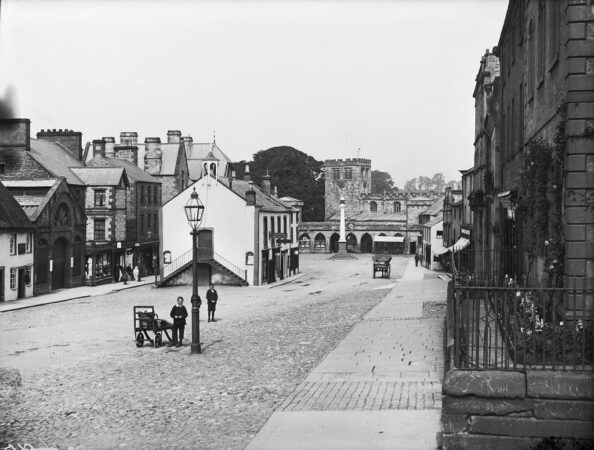
Looking North across Boroughgate in Appleby
Restoration of the area as a tourist destination is underway following damaging winter floods two years ago. Grant aid is providing building repairs alongside the delivery of a five-year programme in partnership with Eden District Council.
Hooton hangars, Cheshire.
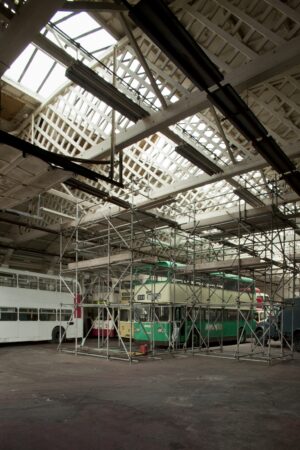
Work is underway replacing the existing roof
Restoration on the three grade-two listed World War Two aircraft hangars is ongoing. The aircrafts were built in 1917 and the site was saved from demolition in 2000 when it came under the ownership of the Hooton Park Trust.
Blackpool Winter Gardens, Lancashire.
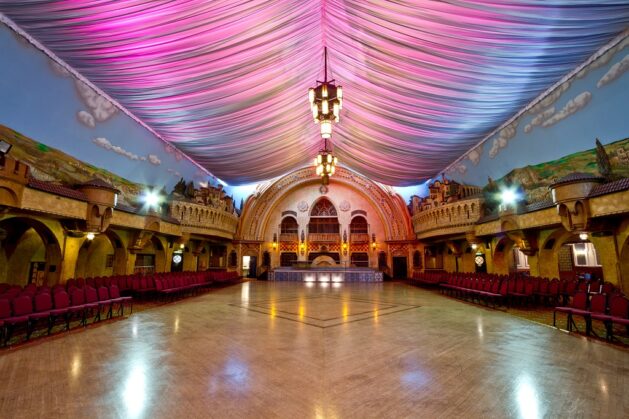
The grade-two listed gardens have been on the register for some time. A £500,000 grant has been given towards the £1.2m Spanish Hall roof repair. Work is estimated for completion next year.
Heaton Hall, Manchester.
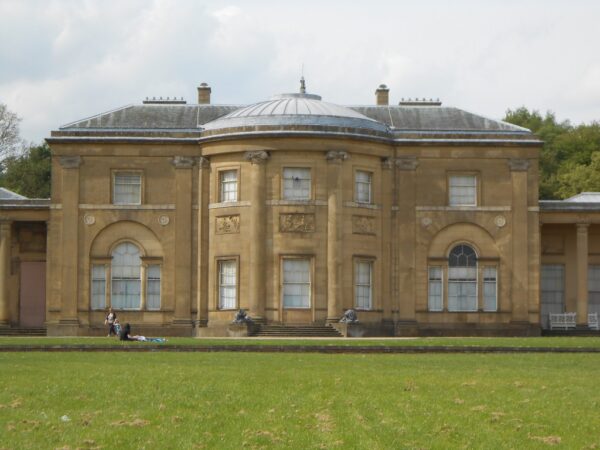
The grade one-listed building has been in a state of deterioration after a fire in the 1980s. Match funding of £757,000 has been made to Manchester City Council covering three phases of repairs. Restoration is nearing completion.
Former Welsh Baptist chapel, Chorlton-on-Medlock, Manchester.
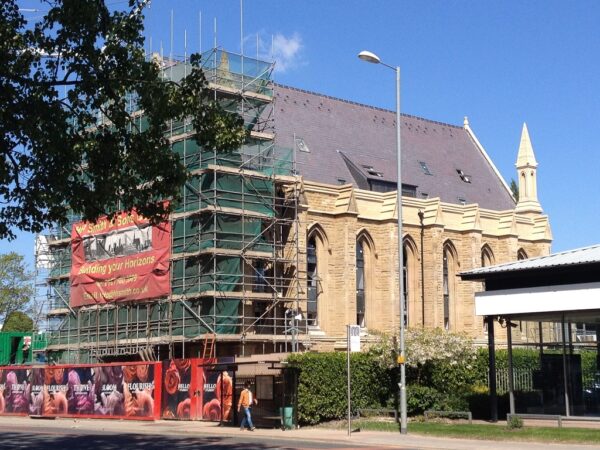
The grade two-listed former chapel was facing an uncertain future but is being renovated into student accommodation. Repairs are in progress and the project should finish in autumn 2017.
Wythenshawe Hall, Manchester.
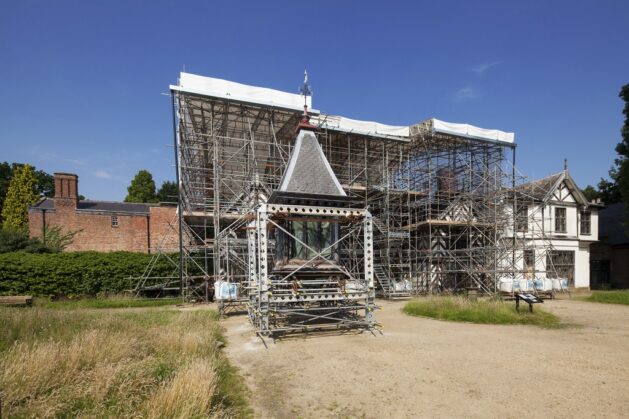
The building’s skeleton showing the fallen clock tower
Only added last year after being ravaged by fire, the timber-framed hall was devastated and much of the historic fabric destroyed. Historic England continues to work with Manchester City Council to conserve what remains.


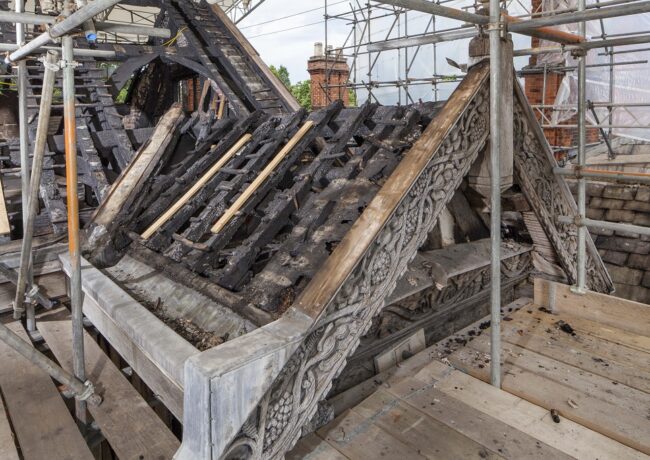


Planning permission has now been granted for the renovation of the Royal Hotel in Burton in Kendal (shown in the first photo). A follow up piece would be interesting to see what has been done in the other areas.
By Anonymous